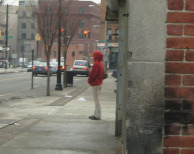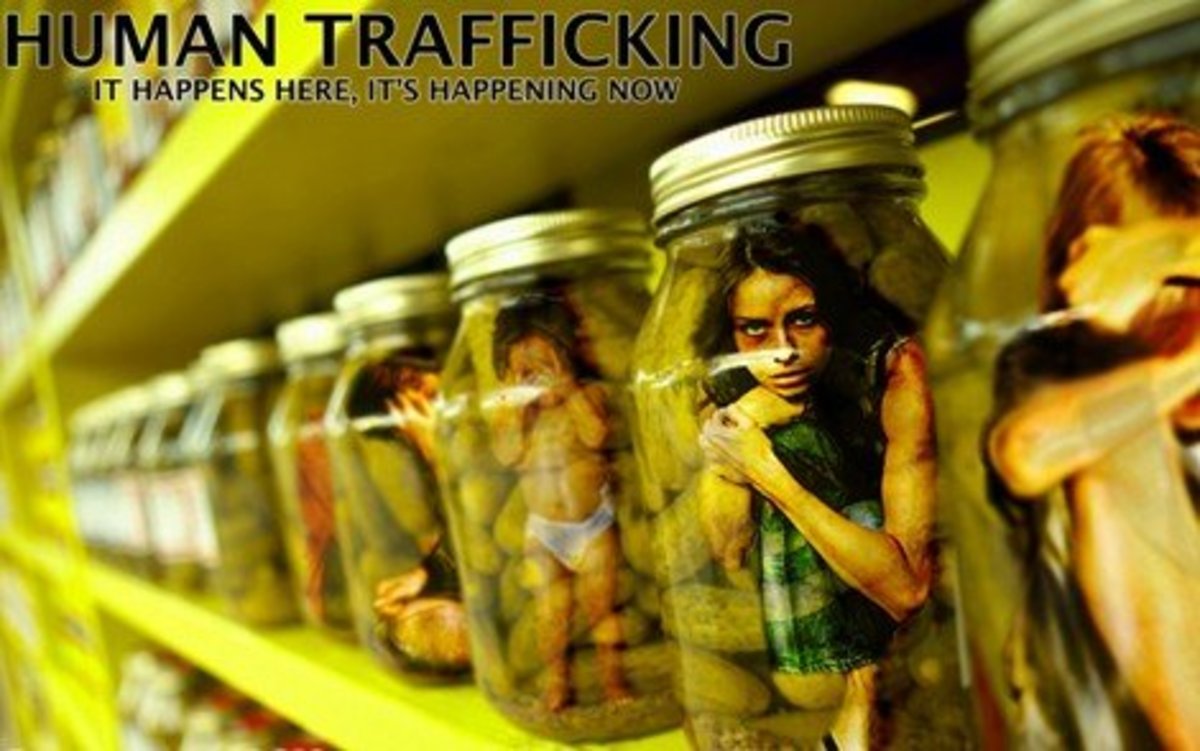Human Trafficking & Modern Day Slavery

The 21st Century Slave Trade
There are continuous discussions, forums, dialog, and blogs in the United States about the atrocities of the Transatlantic Slave Trade which transported Africans, against their will, to American soils - trapping them in a world of forced labor, sexual and psychological abuse for hundreds of years. Most African Americans are still suffering from its lingering effects known as racial discrimination which rears its ugly head from time to time. While we acknowledge this dark period of American history we have to also acknowledge that this overt practice ended generations ago and the most anyone can do about it now is to continue open dialog with one another to ensure that it never happens again.
However, while our focus has been on past racial injustices in the US, a new underground, and perhaps more sinister form of injustice has been growing in leaps and bounds across the globe, known today as Human Trafficking. Human trafficking is the movement of people through deception, coercion, or violence, for the purpose of forced labor, sexual or slavery purposes. The U.S. Department of State estimates that over 600,000 to 800,000 victims are trafficked across US borders each year. Among this group over 65% of the victims are sexually exploited including children as young as 8 years old. Fifteen to Eighteen thousand humans are brought into the US for slave labor. These victims have been reported seen in all 50 states in the past year. There are an estimated 200,000 victims moved around within the U.S. while 6 – 8 billion are trafficked internationally. According to The US Department of State over 1 million new victims are trafficked each year, and over half are children who are purchased for as little as ten US dollars. In terms of the Transatlantic Slave Trade, the value of a young African male agricultural worker on US soil was an equivalent of $40,000.00 in today’s US currency. The value of that same young agricultural male through human trafficking on US soil today is approximately $250.00 - humans with little value. The US state department estimates that there are more slaves today through Human Trafficking than at any other time in human history. One can argue its because of the population increase, another may argue that population increase should have no relevance. If it's wrong, it's wrong!
Human trafficking has become the second largest and fastest growing criminal industry in the world netting over $5-9 billion dollars in 2008 alone. This is more than the combined gross revenues of Starbucks, Google, and Nike during the same period in 2008. Just like the African slaves of the Transatlantic, victims of human trafficking experience a loss of freedom, civil liberties and are subject to forced labor, sexual and psychological abuse, as well as exploitation at the hands of their traffickers who buy and sell them for profit. Human trafficking is commonly known as Modern-day Slavery. The traffickers have complete control over their victims through brutal beatings, rape, starvation, lies, deception, and threats of serious harm to them or their families, and psychological abuse.
It is typical to assume that this is a problem among poor countries and certain race or nationality of people. The unfortunate reality is that anyone can become a victim of human trafficking including US citizens or foreign nationals; people of any race; male or female; child or adult of any age; rich or poor; educated or uneducated. Social standings, education, wealth, or age, has no relevance to becoming a victim of human trafficking. Statistics suggests that Traffickers often prey on people who currently experience a lack of employment opportunities and are hoping for a better life, or people who have an unstable home life, or a history of sexual abuse. These conditions are present in all corners of society regardless of race, nationality, religious beliefs, education, or social standings. Individual vulnerability increases each day as the economy worsens. Victims of Foreign national, as well as US citizen have recently been identified in cities, suburbs, and rural areas in all 50 states in the US including Washington, DC - our nations capital. They are found in legal, legitimate business environments as well as underground black markets. They can be found behind locked doors in brothels or on the floor in factories. In most cases, victims are in plain view, but we can’t identify them because of our lack of human trafficking awareness. We assume that prostitution is voluntary in the sex industry – but in most cases it’s forced and the victims started out at a very young age..
Traffickers are assumed to be bad people in hiding who only come out after sunset - preying on the unsuspected. Unfortunately they are our neighbors in suit and ties. Some are people who may attend church on a regular basis. They may include pimps, brothel owners, people who employ servants in their homes, small business owners, and criminal networks. The facilitators may consist of, but are not limited to; landlords, hotels and motels, transportation companies, advertisers, banks and financial institutions, and service organizations. It’s a difficult crime to detect and prosecute because under US laws it’s not considered smuggling or forced movement. it does not always require transportation or movement across borders. Physical abuse, force, or restraint is not always visible. Often, traffickers use psychological manipulation or closed door abuse to control their victims actions in public. Therefore, it’s difficult to detect whether a person is a victim or not because they are afraid to reveal their actual circumstances.
To date, in every city, suburb, small farm, country or continent across the globe, modern day slavery exists in one form or another. It is estimated that over 27 million people are suffering from one or more forms of slavery and the largest being sex slaves as a direct result of Human Trafficking.
This is a very large problem but what can one person do about it? Here are a few suggestions;
1. Educate yourself and recognize the signs of slavery and call the trafficking hotline if you believe you have seen or met a person who is enslaved. Hotline numbers are 1-800-655-4095 in Southern California or 1-888-3737-888 nationally.
2. Sign up at http://www.sndca.org/trafficking to educate yourself and others about the issue of trafficking in humans and modern slavery by receiving our awareness newsletter.
3. Make the Freedom for Everyone pledge at http://www.sndca.org/freedom and encourage others to live the pledge with you.
4. Minimize opportunities for exploitation by supporting fair trade and anti-poverty programs. Support organizations like Catholic Relief Services, the Coalition to Abolish Slavery and Trafficking (CAST), and Free the Slaves that are working to raise awareness, prevent human trafficking and restore survivors of slavery to freedom and the fullness of life.
Public awareness is a critical element to resolving this dehumanizing problem. Several concerned citizens who have been properly educated about slavery have helped rescue slaves by using anonymous trafficking hotlines to alert authorities about suspected problems.
So what are some of the signs to look for?
1. As much as they want they can not change employers and become very defensive or shut down when the suggestion is made by co-workers or friends.
2. They have no control over their earnings and become defensive or shut down when encouraged by co-workers to seek better pay.
3. Victims are afraid to discuss themselves including their background in the presence of others.
4. Victims live on or near the workplace, possibly under guard. They do not socialize with others and are always in a rush to get home after work. They are not seen in social gatherings and talk very little when they do.
5. They appear to be paranoid and edgy, often impatient or irritated by the end of the day, particularly around the end of their shift.
6. They may have injuries from beatings or signs of torture like cigarette burns or branding. They often suffer from from malnourishment. They wear dark clothing which may conceal their entire body.
7. They may appear as young to middle-age females (or males) on porn sites engaging in explicit sexual activity.
8. They may be small children from preschool to middle school and beyond.
It is time for the world to focus on, and acknowledge that slavery exists today regarless of race, country, nationality, religion, education, or social standings - and it will not go away until governments and individuals educate themselves and get involve and help clamp down on this camouflaged, hidden, and dehumanizing industry known as Human Trafficking or- Modern Day Slavery!





